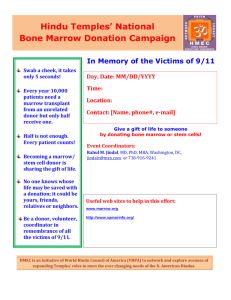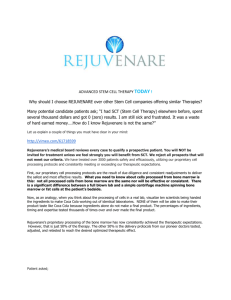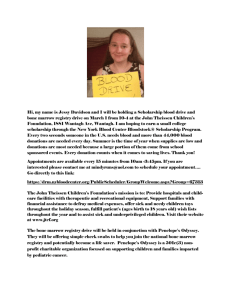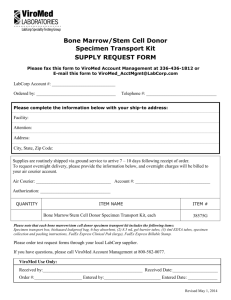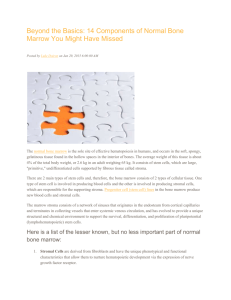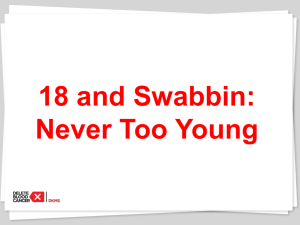Marrow Donor Registry
advertisement
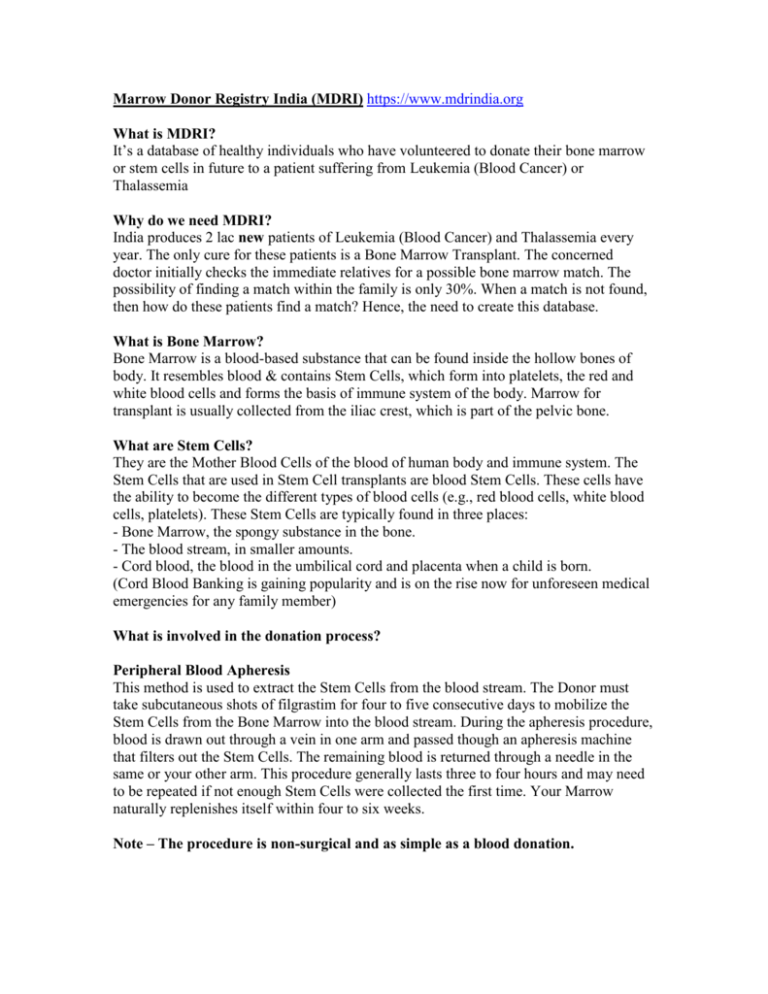
Marrow Donor Registry India (MDRI) https://www.mdrindia.org What is MDRI? It’s a database of healthy individuals who have volunteered to donate their bone marrow or stem cells in future to a patient suffering from Leukemia (Blood Cancer) or Thalassemia Why do we need MDRI? India produces 2 lac new patients of Leukemia (Blood Cancer) and Thalassemia every year. The only cure for these patients is a Bone Marrow Transplant. The concerned doctor initially checks the immediate relatives for a possible bone marrow match. The possibility of finding a match within the family is only 30%. When a match is not found, then how do these patients find a match? Hence, the need to create this database. What is Bone Marrow? Bone Marrow is a blood-based substance that can be found inside the hollow bones of body. It resembles blood & contains Stem Cells, which form into platelets, the red and white blood cells and forms the basis of immune system of the body. Marrow for transplant is usually collected from the iliac crest, which is part of the pelvic bone. What are Stem Cells? They are the Mother Blood Cells of the blood of human body and immune system. The Stem Cells that are used in Stem Cell transplants are blood Stem Cells. These cells have the ability to become the different types of blood cells (e.g., red blood cells, white blood cells, platelets). These Stem Cells are typically found in three places: - Bone Marrow, the spongy substance in the bone. - The blood stream, in smaller amounts. - Cord blood, the blood in the umbilical cord and placenta when a child is born. (Cord Blood Banking is gaining popularity and is on the rise now for unforeseen medical emergencies for any family member) What is involved in the donation process? Peripheral Blood Apheresis This method is used to extract the Stem Cells from the blood stream. The Donor must take subcutaneous shots of filgrastim for four to five consecutive days to mobilize the Stem Cells from the Bone Marrow into the blood stream. During the apheresis procedure, blood is drawn out through a vein in one arm and passed though an apheresis machine that filters out the Stem Cells. The remaining blood is returned through a needle in the same or your other arm. This procedure generally lasts three to four hours and may need to be repeated if not enough Stem Cells were collected the first time. Your Marrow naturally replenishes itself within four to six weeks. Note – The procedure is non-surgical and as simple as a blood donation. How do I volunteer to join the registry? You may contact MDR(I) or enroll on the website. You may then schedule an appointment at MDR(I) office or attend a Bone Marrow drive. At the center or drive, you will be given a health questionnaire and education about being a Donor and if you are a suitable candidate and willing, they will draw a small vial of blood to be tested. Reconsider these points before joining the Registry: MDR(I) volunteer Donors must be willing to consider donating to any patient searching the Registry. If one has doubts about donating Marrow or Stem Cells, he should delay joining the registry until certain of the commitment to be able to donate. Uncommitted Donors give false hopes to patients waiting for transplants. Who can become a Donor? Any healthy individual between the ages of 18-50 years is eligible with no history of cancer, diabetes, heart disease or heart attack. A volunteer Stem Cell Donor must not be greatly over weight or at high risk for contracting AIDS or the HIV virus. SOME QUICK NUMBERS India produces 2 lac new patients every year who need a stem cell donor The registry currently has only 5000 odd volunteers Probability of finding a match within the family is 30% Probability of finding an unrelated match is one in 20,000 PLEDGE YOUR MARROW TODAY! GIFT A LIFE TO SOMEONE
